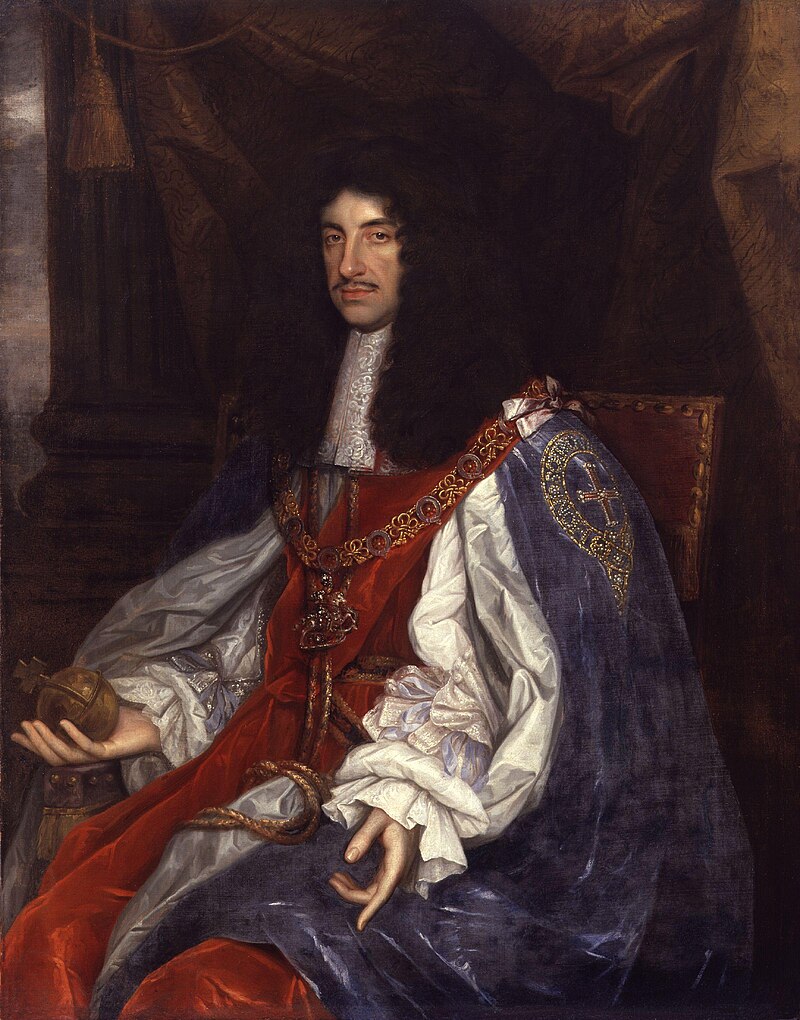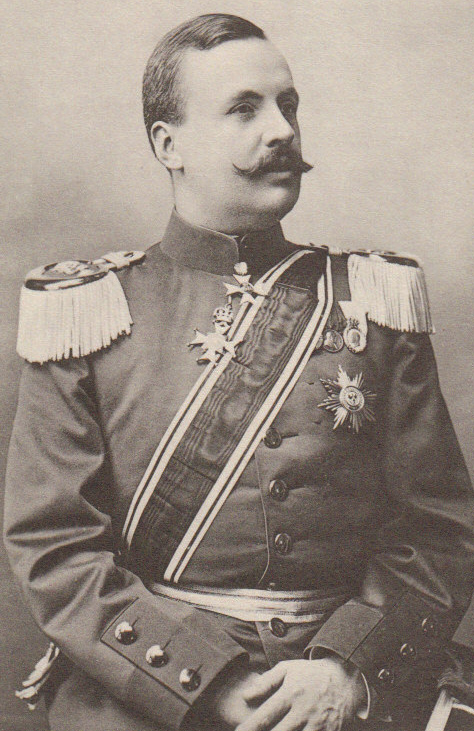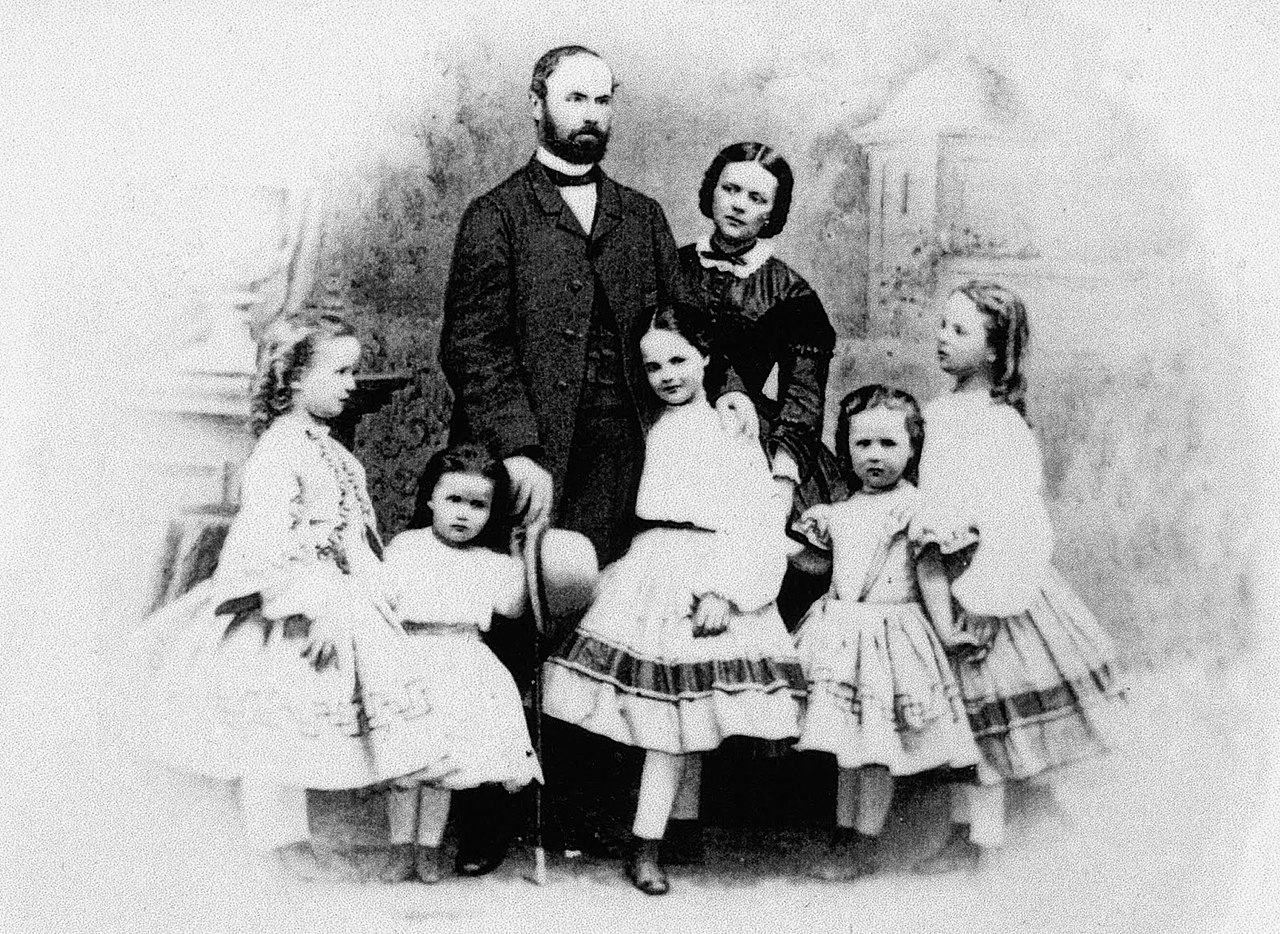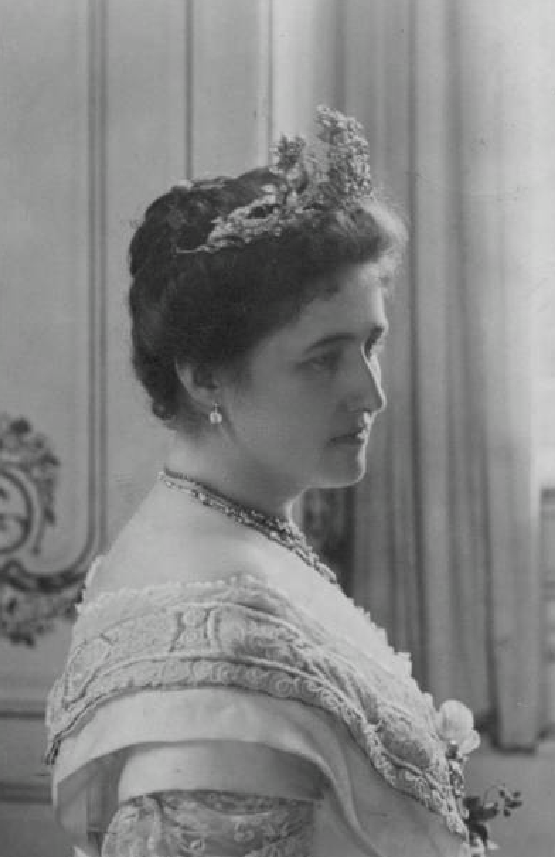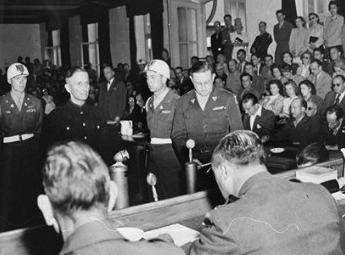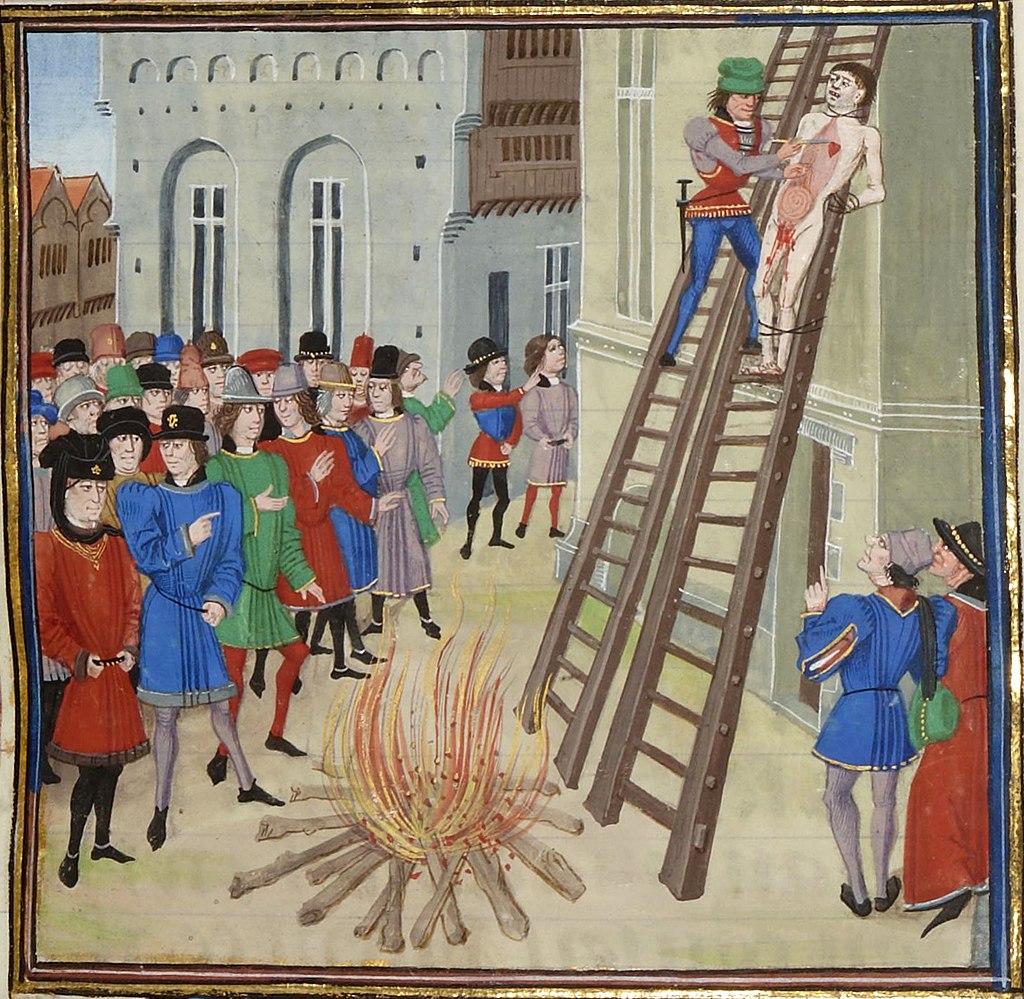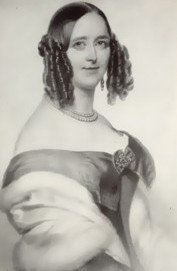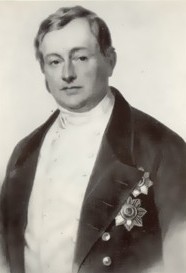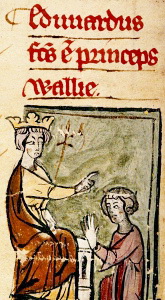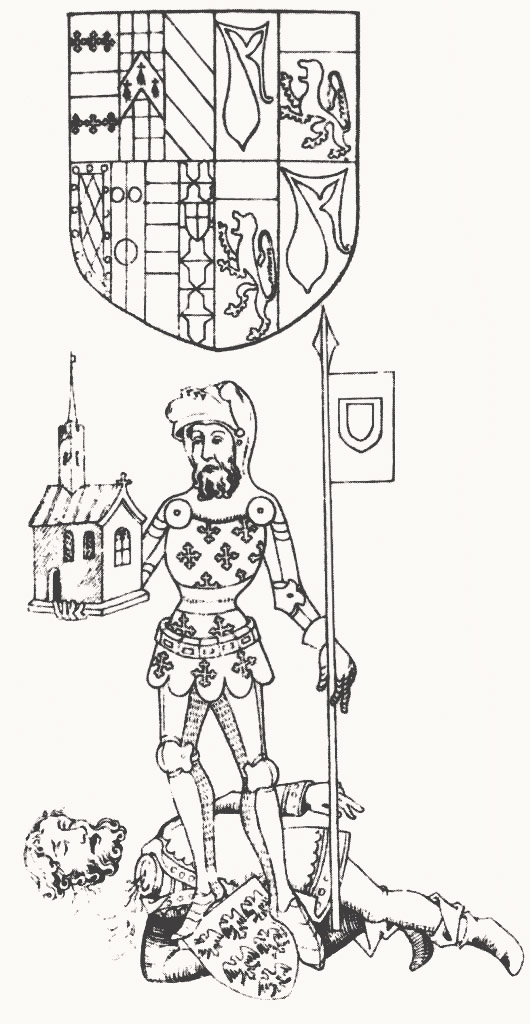by Susan Flantzer
© Unofficial Royalty 2021

Credit – Wikipedia
The first king of the House of Oldenburg, Christian I, King of Denmark, Norway, and Sweden was born in February 1426 in Oldenburg, County of Oldenburg, now in the German state of Lower Saxony. He was the eldest of the three sons and the second of the four children of Count Dietrich of Oldenburg (circa 1398 – 1440) and his second wife Helvig of Holstein (1398 – 1436).
Christian had three siblings:
- Adelheid of Oldenburg (1425 – 1475), married (1) Ernst III, Count of Hohenstein, had one son (2) Gerhard VI, Count of Mansfeld, had one son and two daughters
- Moritz III, Count of Oldenburg (1428 – 1464), married Katharina of Hoya, had one son and two daughters, when his elder brother Christian became King of Denmark, he was given the County of Oldenburg
- Gerhard VI, Count of Delmenhorst and Count of Oldenburg (1430 – 1500), married Adelheid of Tecklenburg, had four sons and three daughters, when his elder brother Christian became King of Denmark, he was given the County of Delmenhorst and he later inherited the County of Oldenburg
At the death of their father in 1440, Christian and his brothers jointly succeeded as Count of Oldenburg and Delmenhorst. Christian was raised by his maternal uncle Adolphus VIII, Duke of Schleswig, Count of Holstein. Under his uncle’s tutelage, Christian gained experience in political matters which would prove to be beneficial as King of Denmark.
In January 1448, 31-year-old Christopher III, King of Denmark, Norway, and Sweden suddenly died. His two-year marriage to 19-year-old Dorothea of Brandenburg was childless. This resulted in a succession crisis that broke up the Kalmar Union which had united the Kingdoms of Denmark, Norway, and Sweden. Dorothea was named the interim regent of Denmark until a new monarch could be elected. The Danish throne was first offered to Christian’s uncle Duke Adolphus of Schleswig, who was the most prominent feudal lord of the lands subject to Danish sovereignty. Adolphus declined and recommended his nephew Christian, Count of Oldenburg.

Dorothea of Brandenburg, Queen of Denmark, Norway, and Sweden; Credit – Wikipedia
In June 1448, Karl Knutsson, Lord High Constable of Sweden, was elected King of Sweden and reigned as King Karl VIII. In September 1448, Christian of Oldenburg was elected King of Denmark and reigned as King Christian I. The Danish Council of State made it a condition that Christian should marry Dorothea of Brandenburg, his predecessor’s widow. Christian and Dorothea were married on October 26, 1449, and two days later, their coronation was held.
Christian I and Dorothea had five children. Their two surviving sons were both Kings of Denmark and their daughter was the Queen Consort of Scotland.
- Oluf of Denmark (1450 – 1451), died in infancy
- Knud of Denmark (1451 – 1455), died in childhood
- Hans, King of Denmark, Norway, and Sweden (1455 – 1513), married Christina of Saxony, had six children, including King Christian II
- Margaret of Denmark, Queen of Scots (1456 – 1486), married James III, King of Scots, had three children including James IV, King of Scots
- Frederik I, King of Denmark and Norway (1471 – 1533), married (1) Anna of Brandenburg, had two children including King Christian III (2) Sophie of Pomerania, had six children

Christian’s rival King Karl VIII; Credit – Wikipedia
Norway was now faced with the choice between a union with Denmark or Sweden or electing a separate king, an option that was quickly discarded. The Norwegian Council of the Realm was divided between Christian and Karl but eventually ruled in favor of Karl. After an armed conflict between Denmark and Norway, a joint Danish-Swedish meeting decided that Karl should renounce Norway in favor of Christian and that the survivor of the two kings would be recognized as king in all three kingdoms. Karl reluctantly agreed with the decision. Christian was crowned King of Norway on August 2, 1450. Less than four weeks later, Christian’s wife Dorothea gave birth to their first child, named Oluf after Norway’s patron saint. However, little Oluf died less than a year later.
Being the king in both Denmark and Norway gave Christian a distinct advantage, however, the wars fought between Christian and Karl from 1452 were not decisive. In 1457, a rebellion against King Karl VIII took place, led by Archbishop Jöns Bengtsson and Erik Axelsson Tott, a Swedish nobleman. Karl went into exile and the two leaders of the rebellion organized the election of King Christian I of Denmark as King of Sweden. Karl was able to regain the Swedish throne two more times, from 1464–65 and 1467–1470). Sweden would not be reunited with Denmark and Norway until Christian’s son and successor King Hans conquered Sweden in 1497. After the death of his maternal uncle Adolphus VIII, Duke of Schleswig, Count of Holstein in 1459, the representatives of Schleswig confirmed Christian’s succession to the titles Duke of Schleswig and Count of Holstein.

Roskilde Cathedral; Photo Credit – Susan Flantzer
King Christian I of Denmark died, aged 55, at Copenhagen Castle in Copenhagen, Denmark on May 21, 1481. He was buried in the Chapel of the Magi, which he had built as a family burial chapel for the House of Oldenburg, at Roskilde Cathedral, the traditional burial site for the Danish royal family in Roskilde, Denmark. His wife Dorothea survived him by fourteen years, dying on November 25, 1495, and was buried with her husband. While the tombs of King Christian III, King Frederik II, and their queen consorts are in the Chapel of the Magi, the graves of King Christian I and Queen Dorothea are marked with simple stones because the chapel itself was to be considered their memorial monument.

Grave of King Christian I and Queen Dorothea – Photo Credit – Susan Flantzer
This article is the intellectual property of Unofficial Royalty and is NOT TO BE COPIED, EDITED, OR POSTED IN ANY FORM ON ANOTHER WEBSITE under any circumstances. It is permissible to use a link that directs to Unofficial Royalty.
Kingdom of Denmark Resources at Unofficial Royalty
- Kingdom of Denmark Index
- Danish Orders and Honours
- Danish Royal Burial Sites: House of Oldenburg, 1448 – 1863
- Danish Royal Burial Sites: House of Schleswig-Holstein-Sonderburg-Glücksburg, 1863 – present
- Danish Royal Christenings
- Danish Royal Dates
- Danish Royal Residences
- Danish Royal Weddings
- Line of Succession to the Danish Throne
- Profiles of the Danish Royal Family
Works Cited
- Da.wikipedia.org. 2020. Christian 1.. [online] Available at: <https://da.wikipedia.org/wiki/Christian_1.> [Accessed 19 December 2020].
- De.wikipedia.org. 2020. Christian I. (Dänemark, Norwegen Und Schweden). [online] Available at: <https://de.wikipedia.org/wiki/Christian_I._(D%C3%A4nemark,_Norwegen_und_Schweden)> [Accessed 19 December 2020].
- En.wikipedia.org. 2020. Adolphus VIII, Count Of Holstein. [online] Available at: <https://en.wikipedia.org/wiki/Adolphus_VIII,_Count_of_Holstein> [Accessed 19 December 2020].
- En.wikipedia.org. 2020. Christian I Of Denmark. [online] Available at: <https://en.wikipedia.org/wiki/Christian_I_of_Denmark> [Accessed 19 December 2020].
- En.wikipedia.org. 2020. Dietrich, Count Of Oldenburg. [online] Available at: <https://en.wikipedia.org/wiki/Dietrich_of_Oldenburg> [Accessed 19 December 2020].
- Genealogics.org. 2020. Leo’s Genealogics. [online] Available at: <https://www.genealogics.org/index.php> [Accessed 19 December 2020].


